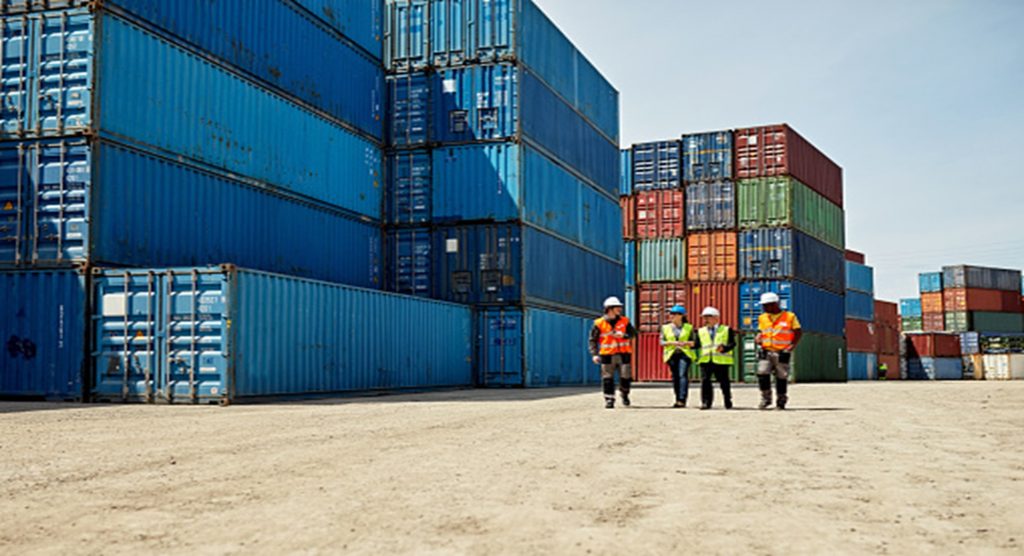In recent years, several challenges have negatively affected the supply chain globally. For instance, the vacuum created by the impact of the pandemic in 2020 is still vigorously testing the resolve of the supply chain and logistics industry.
Another massive hit for the logistics industry is the recent Russian-Ukraine war affecting significant sectors worldwide. In addition, pandemic-hit China has also resulted in congested port operations and freight backlogs.
Amidst these industry challenges, the U.S is a significant player in the logistics and supply chain business. In addition, geopolitical crises, shortage of labor, and problems with LTL are gradually becoming growing concerns affecting not only the U.S. but also other countries.
In truth, the U.S. plays a huge role in the supply chain. This means that unchecked issues will create ripple effects in the global logistics industry.
This article discusses some of the challenges of the supply chain and logistics industry in the U.S. We will also explore some of the ripple effects of these challenges in other countries worldwide.
4 Challenges of the U.S. Supply Chain & Logistics industry
The challenges facing the supply chain and logistics industry in the U.S. are due to many culminating factors. However, let’s look at the top 4 current issues facing the industry.
- Depleted Labor Force
Abe Eshkenazi, the Association of Supply Chain Management CEO, opined that the logistics industry lacks enough staff. While some experts think the shortage in the workforce is due to the covid-19 pandemic, in reality, it goes beyond it.
The pandemic generated a massive labor shortage in the United States, dubbed “The Great Resignation” by some. In 2021, more than 47 million people left their jobs. Many of them were looking for better work-life balance and flexibility, higher pay, and strong business culture.
However, most of the workers that left the supply chain industry said the work is more stressful and poorly appreciated in terms of payment. The truth is workers barely work for three consecutive months.
Drivers are frequently overworked and underpaid. Truck drivers put in long, exhausting hours, and many trucking companies undervalue their employees’ time. When employees’ compensation packages and work-life balance are still not highly appreciated by many firms, it is difficult to retain talent and attract new drivers.
Although truck driver scarcity has existed for some time, labor shortages have spread to dockworkers and mechanics. Even more problematic is retaining existing drivers.
Beyond pay, the government policy on staff recruitment has further contributed to staff shortages. In the U.S., there is a clear rule that restricts anyone under 21 from working as a commercial driver.
The communique published at the 84th Inland Transport Committee Roundtable has it that most employees of the supply chain industry are old. It further stated that replacing them becomes difficult once they leave the job as these positions are mainly for field officers and drivers.
- Delayed Production Delivery
In truth, there has been an increase in demand for consumer products. However, a backlog ensues without the corresponding labor capacity to deliver these products.
The widespread labor shortages in the U.S. has made it difficult for manufacturing companies to continue at their 100% production capacity. For instance, earlier in 2022, Stellaris, the world’s 4th largest carmaker, mentioned that raw resources such as metals would continue to challenge the sector.
Furthermore, the semiconductor scarcity, which cost the corporation around 20% of its expected production last year, peaked in the third quarter, according to the company. These issues have resulted in a growing hike in the price of commodities.
Besides production challenges, employers lack the workforce and capacity to manage adequately, process and unload U.S. imports. This results in long delivery periods and reverberating shipping delays throughout the supply chain.
- Visibility problems
With the growing demands of consumers, most companies have continuously encountered sudden hiccups in their supply chain.
According to a report published by Capgemini, 72% of manufacturing companies are faced with the colossal challenge of monitoring their end-to-end supply chain. Compounded with the initially listed challenges, taking and keeping an inventory of stocks on the move, predicting consumers’ demand becomes more challenging.
Going by the recent globalization in the world and the escalating demands, most companies are gradually switching to limitless third parties in fulfilling their supply demands. This is solely aimed at getting more capable hands to meet their needs.
- Technological Advancement
The current supply chain and logistics problems being faced across the world have necessitated many companies to look outward and outside the box to seek solutions. Technology is a panacea to the issues of supply chain and logistics.
Technological influence has been channeled towards solving the challenges across all the industry sectors, from cargo transport to last-mile delivery. Currently, there is a steady pace in clearing several backlogs of demands through technological inventions.
In 2022, companies in the supply chain and logistics industry are looking to invest in Artificial Intelligence to solve pending issues. Experts are also turning to the possibilities of integrating the metaverse concept in the industry.
However, many of these technological innovations are still in the testing phase. Also, these solutions in the supply chain and logistics industry are pretty expensive. Making it difficult for emerging companies as well as existing ones to try.
How The Global Community Is Affected By The Current Supply Chain Woes In The U.S.
We have established that the U.S. is one of the leading drivers of the world supply chain and logistics industry. Therefore, it is only logical to assume that some of the challenges seen in the U.S. will have a rebounding effect on other countries.
In this light, let’s look at how the rest of the world is reacting to the current challenges the logistics industry faces in the U.S.

- Price Instability
When there is an imbalance between supply and demand, inflation and price instability usually ensue. This is the case in the global community.
There have been reports of incurring higher costs during production in trying to override the impacts of labor shortage and hasten the delivery time. Hence, manufacturers are forced to increase the sales prices to cover losses.
- Scarcity
It is no news that production delay and disruption in logistics will result in scarcity of raw materials. For instance, the lingering semiconductor chip shortage has been attributed to some of the aforementioned challenges.
The truth is that the U.S. depends on other countries for semiconductor chip production. Between the pandemic and the conflict in Russia and Ukraine, it is glaring that the disruption will persist for a long time.
The resultant disruption in the electronics and automotive industry has forced big companies to scale back on their production. This, in turn, has led to the scarcity of mobile phones, automobiles, and other electronic devices exported by the U.S.
This is just one of a thousand more examples of raw material scarcities felt worldwide.
- Lead Time
With the challenges in the U.S. growing, it is becoming challenging to minimize the delay in lead times. The lead times across several regions have increased. Across E.U. countries, lead times have extended more than 200%. Asian countries have a lead time beyond 220%, while the U.S. is battling around 198% – 200%.
This effect is a result of disrupted logistics, which usually results in companies and manufacturers going out of stocks. Electrical companies published in the ISM June 2021 Manufacturing report that their lead times have increased from 4 months to a year.
- Capital Loss
When stocks are exhausted, retailers in other countries, especially in Africa and some of South America, tend to close down their business. However, if they do not shut down, they will look into diversifying.
Invariably, closing down a business or attempting to pick up another usually results in capital loss.
Combating These Challenges
With all these outlined challenges hindering the optimum performance of the U.S. supply chain industry, it is essential to take proactive measures and look to the future.
- A flexible and resilient operational model is pertinent to ensuring proper service delivery. This should integrate dynamic policies that suit any working environment and circumstance (government policies, climate change, disease outbreaks, and new legislation).
- Technological integration, the use of A.I., and the adoption of data-driven inventions are the key to unlocking the solutions to these challenges. In the case of successful integration, operational costs will be minimized, and visibility will be provided.
- Technology should also be adopted in the management of all the sectors of the supply chain and logistics industry to fulfill and meet up with customer demands.
In Conclusion
Finally, cooperating and liaising with complementary companies is essential in achieving a top-notch service delivery. As a stakeholder in the logistics industry, it is crucial to explore the capabilities of other external partners.
The question that should be asked is Compete or Collaborate to fight the challenges of the Industry. The market is already a place where there is rate increases from carriers or prioritised spacing for certain entities. Collaborating with other service providers and companies can combat the challenges of the industry and tranform business to become Digital Forwarders.






